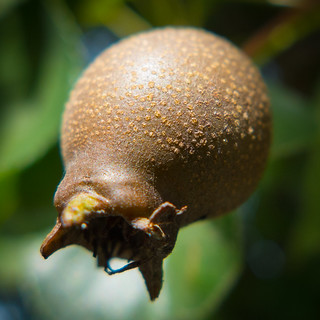
We are all familiar with the deep-seated biological drive to replicate our DNA into new packages, to form a next generation of couriers who will carry this ancient genetic blueprint when our short-lived bodies no longer can. We may not understand or even accept the evolutionary basis for this procreative imperative, but few of us have been aloof to its power.
Every one of us is the product of it, after all. Somewhere, decades ago, two people messily mingled their chromosomes in the most intimate of acts and, nine months later, bestowed you unto the world. And another pair did the same to produce me, my proud father being older than I am now when he cradled his late-in-life newborn son. Each of those parents of ours was in turn the results of earlier sexual encounters from a sepia-toned age. There’s been a lot of that going on, a grey-haired old attorney once said to me with a smile as we ate our workday lunch in dress shirts and ties next to a table where a young couple groped and kissed. Thou shalt be a father of many nations, Abraham was promised.

Even when we don’t have the end (a baby) in mind, or actively take steps to prevent its fulfillment, the means certainly preoccupies us to no end. A laughable amount of our attention and effort is devoted to pursuing an act whose fleeting peak moments will add up to mere days over a lifetime. For most of us, this long project begins in earnest before we’ve yet spent twenty years on the planet. But that was already middle age for those prehistoric forebears whose liaisons by the fire ultimately gave rise, a few thousand generations later, to the kids now pretending not to notice each other in high schools, malls, churches, and on Facebook.
The project never quite ends, either, at least not mentally. Long after the boiler quits producing enough steam to move the engine of actual reproduction, the whistle still blows. Whatever our age or sex, we still admire the curves or square shoulders, fair faces or rugged jawlines, of the beautiful people we encounter, both on the sidewalk and in the staged scenes playing out on our video screens. We continue to preen and posture, adorn ourselves with cosmetics and ornaments, and demonstrate our genetic fitness by preaching rousing sermons, writing books and blogs, taking selfies.
This behavior is signaling for sexual selection, which is an important mechanism behind biological evolution. It’s not just about the “survival of the fittest,” as the misleading but common phrase goes, but the replication of the fittest. What is “fit” is determined not just by how well organisms survive until they can reproduce, but how successful they are at the business of reproduction. And that, at least in sexually reproducing animals where both parties have a say in the matter, usually begins with a choosy female—faced with the investment of bearing and raising offspring—selecting the male whose feathers, fanny, or financial status are pleasing to her.
Once our species developed some cognitive abilities, demonstrations of brainpower became an important part of this signaling. Look at me, I’ve drawn some cave paintings! Invented a religion of which I, coincidentally, am shaman and seer! Written a poem! (The process can get carried away with itself, with runaway selection occuring for features that really have no importance for actual fitness or even signaling of fitness.) But all this strutting about was accompanied by—perhaps even led to—another realm of mutation and selection entirely apart from biology: cultural evolution.

Cultural evolution is a big topic, as witnessed by the size of Paul Ehrlich’s fine book on it. But one aspect I find particularly compelling (that enthusiasm not shared by Ehrlich, I might add) is the idea that units of culture propagate themselves for their own sakes, using the brains and information-conveying apparatus of humans as their hosts. “These proposed evolutionary units are memes rather than genes, propagating themselves through the minds of human beings instead of the gonads.”
So says our chapter “The Memes Shall Inherit the Earth” in Evolving out of Eden. (Look, ladies, I co-authored a book!) I’m very proud of that chapter. Memetics pioneer Susan Blackmore praised it as “one of the best descriptions” she’s seen “of how the memes of religion work.” So now I will take the liberty of using a few paragraphs excerpted here and there from it.
These memes compel me to reproduce them.
We are now well acquainted with the foundational idea of biological evolution: The genes in the DNA recipe for the best-adapted organisms are the ones that wind up replicating the most. Today’s evolutionary survivors among the genes are being propagated in beetles and basketball players rather than dodo birds and dinosaurs. Memetics posits memes as cultural equivalents to the biological replicators: Those memes that have replicated the best—via books, videos, blog postings, sermons, gossip, etc.—are the ones that now occupy the most cognitive territory in our brains.
Certainly, the success of the ideas we cherish and spread isn’t an accident. It is these ideas that won the struggle for our attention, having the right attributes to survive in our brains and replicate from one brain to the next. They are cultural equivalents to the genetic winners who are now alive rather than vanished from the earth with only fossils as their legacy.

Kate Distin, an independent scholar of cultural evolution, views attention as the meme’s limited resource, analogous to the limited ecological resources for which genes compete. “There is a struggle for existence because a vast array of memes is competing for the limited resource of human attention, and therefore the fitness of any given meme will be influenced chiefly by its ability to gain and retain attention.” 1
Brains constitute “a world full of hosts for memes,” and there are “far more memes than can possibly find homes,” says Blackmore.2 So they must be selfish and competitive, like genes; “their success depends on the advantages they confer on themselves. In the struggle for brains’ attention they must in some way be ‘better’ than their rivals.” This doesn’t necessarily have anything to do with the effects the memes “have on the genetic success of their possessors.” 3 Contraception usage is an example of an idea that has flourished despite the direct and drastic effect it has on the genetic propagation of individuals adopting it.
Often, however, there is indeed a symbiosis between a meme and the person bearing it. Luther’s revolutionary theological ideas put his life in danger, but they also greatly impressed the Elector Frederick of Saxony. Spared Rome’s wrath by the interventions of this powerful friend, Der Reformator had a full lifetime to refine and spread these ideas, and also to procreate his genes: He had six children. There are genetic descendents of Luther walking around today, as well as countless Protestant churches with doctrines that incorporate Lutheran memes of sola scriptura and justification by faith alone.
The organisms, religions, and political parties produced by genes and memes don’t need to be appealing or useful in the grand scheme of things. Neither “gene nor meme theory has anything to say about the intrinsic value (i.e., ‘goodness’) of the information that its replicators carry.” 4 They just need to be good at replicating, and they are happy to use you as a host.
It is a bit unsettling to step back and view yourself as a mere carrier of genes and memes. My entire life, it seems, is devoted to the propagation of information. The payload is not just the hard-won result of a billion years of evolutionary experiment that are encoded in my body’s cells and half of the encoding in my kids, but also the raw ideas that I convey with every word I speak and write. The memes want me to spread them around, for the same reason that mindless genes “want” to replicate: Those that do so (because their ancestors did) are the ones that now exist. And they are using me to achieve that goal.
We are helpless to resist the pull of the memes that have colonized us. My own urge to share ideas and, on some primal level, hope that others will adopt them (despite my conscious protests about the necessity of individual thinking) is as strong, in its way, as the sweet and tingling drives that led to these eleven kids of mine. And thus I sit here and type out yet another essay on this blog, fussing about the placement of pictures and the rhythm of my prose. Thus I bared my soul last week about a religion lost and science found, in an interview that will have been heard a hundred thousand times next month.
Now those memes packaged in the book my co-author and I spoke about in that interview, some of which just got themselves propagated again here, give Bob and me little food-pellets of satisfaction at seeing more copies sold, hard work appreciated, carefully written words read. Good humans. Keep on writing.
We are products of our genes, and now servants to our memes. We might as well revel in the absurd complexity of what we have become: walking primates who spend our days siphoning information from place to place and pretending that a little of it is our own.